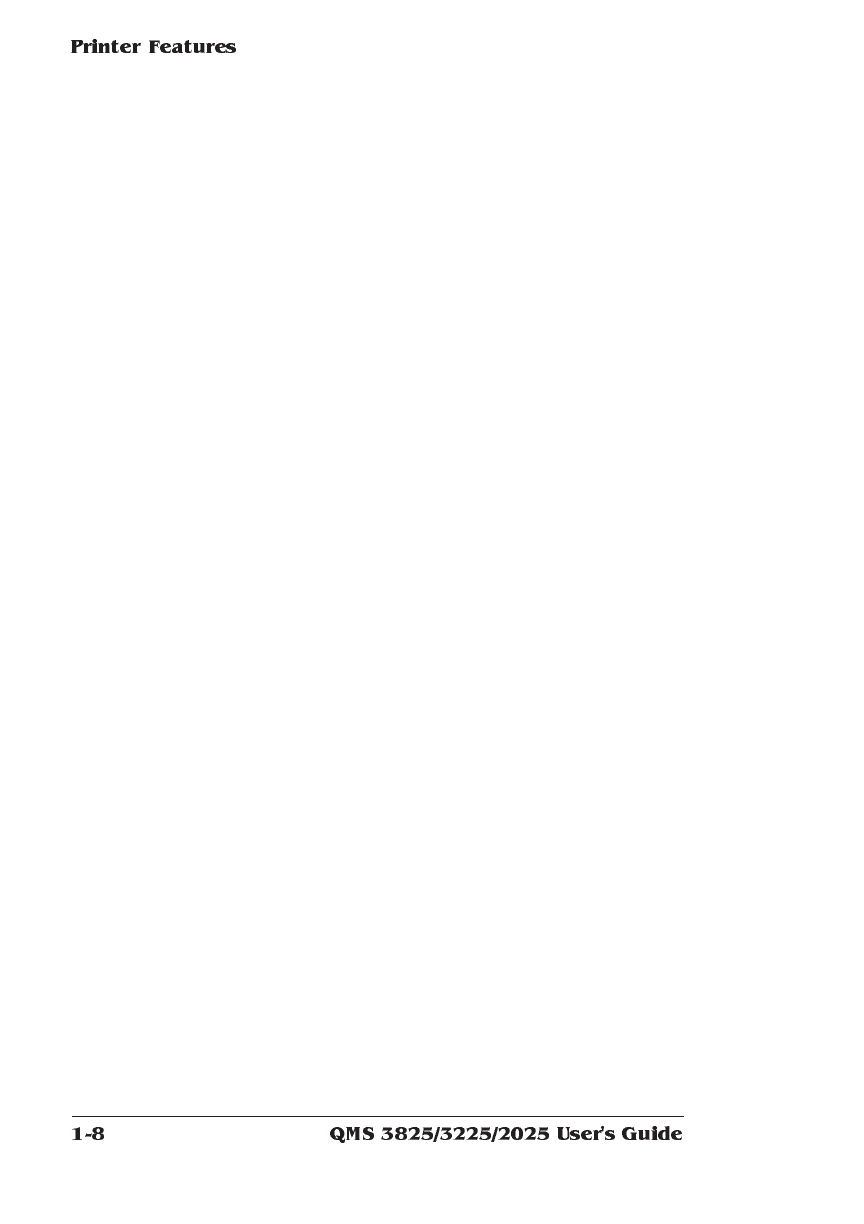
available applications, selects the appropriate emulation from
those installed on the printer and processes the print job, freeing
you from the need to change printer switch settings or send soft-
ware commands to accommodate different printer languages.
■ Input Buffers—The printer has expandable input buffers, which
enable it to receive large amounts of print data over any or all of
its interfaces. This not only increases the printer’s performance,
but it also relieves the central processing unit (CPU) of time-con-
suming print data transmission tasks.
■ Compile-Ahead Processing—Pioneered by QMS, compile-
ahead technology allows the compiling, rasterizing, and printing to
work independently but simultaneously. This significantly reduces
processing time by increasing printer controller throughput.
■ Compressed Data Formats—Crown printers convert data
received by the input buffers into intermediate, compressed
blocks until the data is needed for printing. These compressed
blocks of data are designed to be processed rapidly by the
printer, and many more can be stored in memory at one time than
can traditional bitmapped images.
■ Automatic Jam Recovery—Crown technology also provides
automatic jam recovery. With most printers, if a media jam
occurs, you must remove the jammed media and then reprint the
job. On a Crown printer, if a media jam occurs, once you clear the
jam, the printer reprints the jammed page and continues with the
print job. This is possible because compressed data formats
allow more pages to be stored in memory. The printer remembers
the last page printed, pulls the necessary intermediate blocks
from memory, and automatically reprints any lost pages.
■ User-Configurable Memory Clients— Printer memory is
divided among memory “clients.” You can configure the size of
most memory clients to meet your specific printing, computing,
and network needs best.
■ Context Switching—This feature allows Crown printers to pre-
serve the “state” of a language or emulation — including down-
loaded fonts, forms, logos, macros, overlays, and other data —
when you switch from one printer language or emulation to


















